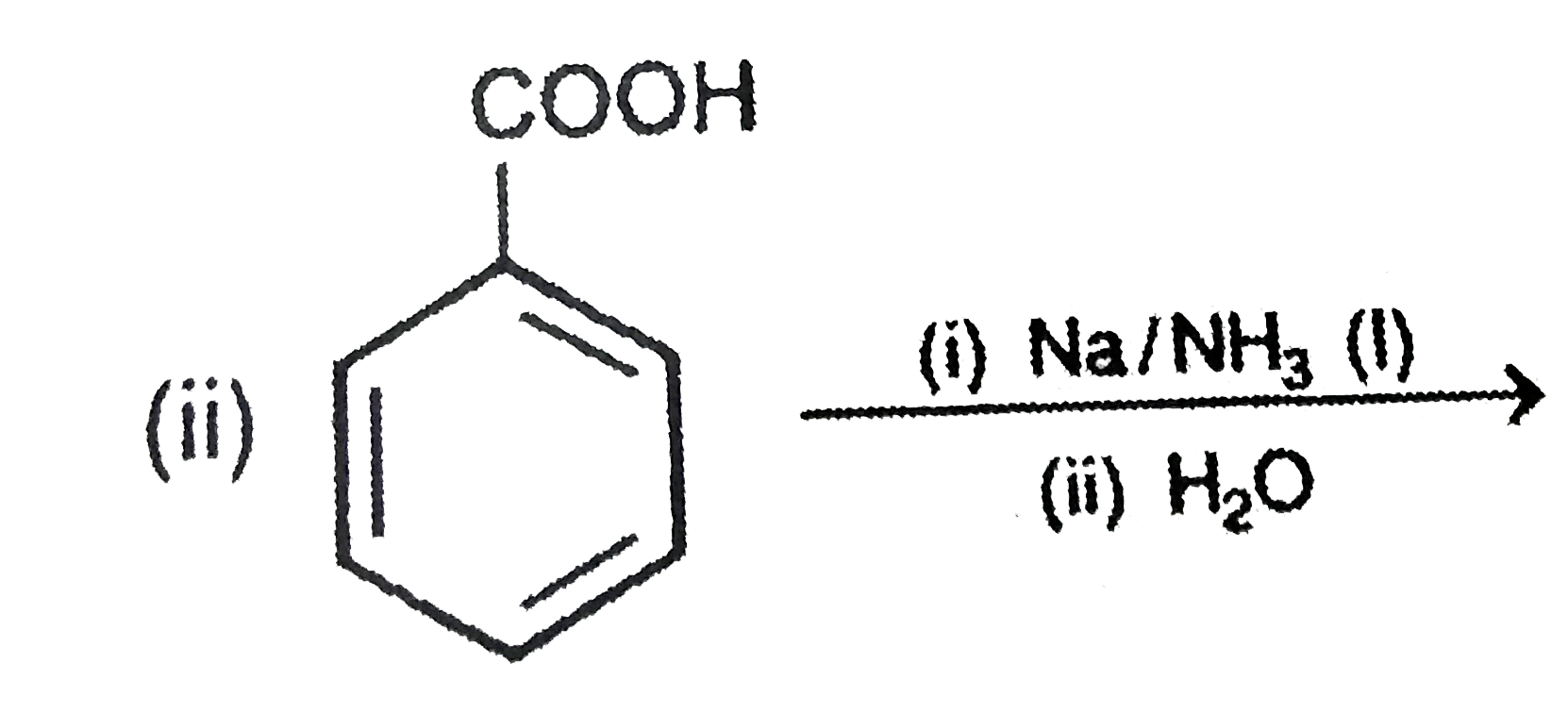Complete the following :
CH3−CH2−O−C6H5+HI(Conc.)→
To solve the given reaction of ethyl phenyl ether with concentrated HI, we will follow these steps:
Step 1: Identify the Reactants
The reactant is ethyl phenyl ether, which can be represented as:
CH3CH2-O-C6H5
Step 2: Understand the Reaction Mechanism
When concentrated HI reacts with ethers, it typically involves the cleavage of the ether bond. The oxygen atom in the ether has lone pairs that can participate in resonance with adjacent groups. In this case, the oxygen is bonded to a phenyl group (C6H5) and an ethyl group (C2H5).
Step 3: Resonance Stabilization
In ethyl phenyl ether, the lone pair of electrons on the oxygen can resonate with the phenyl ring. This means that when the ether bond is cleaved, the oxygen will preferentially bond with the phenyl group due to the resonance stabilization.
Step 4: Cleavage of the Ether
When HI dissociates, it forms H⁺ and I⁻ ions. The ether bond will break, and the oxygen will take the hydrogen (H⁺) from HI, leading to the formation of phenol (C6H5OH). The ethyl group (C2H5) will bond with the iodide ion (I⁻) to form ethyl iodide (C2H5I).
Step 5: Write the Products
The products of the reaction will be:
1. Ethyl iodide (C2H5I)
2. Phenol (C6H5OH)
Final Reaction
Thus, the complete reaction can be written as:
CH3CH2-O-C6H5+HI (conc.)→C2H5I+C6H5OH
---
The reactant is ethyl phenyl ether, which can be represented as:
CH3CH2-O-C6H5
When concentrated HI reacts with ethers, it typically involves the cleavage of the ether bond. The oxygen atom in the ether has lone pairs that can participate in resonance with adjacent groups. In this case, the oxygen is bonded to a phenyl group (C6H5) and an ethyl group (C2H5).
In ethyl phenyl ether, the lone pair of electrons on the oxygen can resonate with the phenyl ring. This means that when the ether bond is cleaved, the oxygen will preferentially bond with the phenyl group due to the resonance stabilization.
When HI dissociates, it forms H⁺ and I⁻ ions. The ether bond will break, and the oxygen will take the hydrogen (H⁺) from HI, leading to the formation of phenol (C6H5OH). The ethyl group (C2H5) will bond with the iodide ion (I⁻) to form ethyl iodide (C2H5I).
The products of the reaction will be:
1. Ethyl iodide (C2H5I)
2. Phenol (C6H5OH)
Thus, the complete reaction can be written as:
CH3CH2-O-C6H5+HI (conc.)→C2H5I+C6H5OH
Topper's Solved these Questions
- ETHERSBook:DINESH PUBLICATIONChapter:ETHERSExercise:HIGHER ORDER THINKING SKILLS (HOTS) QUESTIONS
Explore 6 Videos
- ETHERSBook:DINESH PUBLICATIONChapter:ETHERSExercise:MULTIPLE CHOICE QUESTIONS (TYPE-I)
Explore 16 Videos
- ETHERSBook:DINESH PUBLICATIONChapter:ETHERSExercise:ADDITIONAL IMPORTANT QUESTIONS
Explore 20 Videos
- ELECTROCHEMISTRYBook:DINESH PUBLICATIONChapter:ELECTROCHEMISTRYExercise:ADDITIONAL NUMERICAL PROBLEMS FOR PRACTICE
Explore 12 Videos
- GENERAL PRINCIPLES AND PROCESSES OF ISOLATION OF ELEMENTS Book:DINESH PUBLICATIONChapter:GENERAL PRINCIPLES AND PROCESSES OF ISOLATION OF ELEMENTS Exercise:Brain Storming Multiple Chocie Questions
Explore 7 Videos
Similar Questions
Complete the following reactions :
(i)C2H5−O−C2H5+HCICold−−→ (ii)C2H5−O−C2H5+HIExcess−−−→
(ii)C2H5−O−C2H5+CI2Sunlight−−−−→ (iv)CH2=CHCH2ONa+ICH2CH=CH2Heat−−→
(v) (CH3)2C=CH2+C2H5OHH2SO4−−−→
(vi)
View SolutionComplete the following reactions:
(i) CH3−CH2−O−CH3| C | CH3−CH3−HIHeat−−→
View SolutionComplete the following reactions :
(i) CH3−CH2−C≡C−CH2−(CH2)6−CH2OH(i)Na/NH3(I)−−−−−−−−−−→(ii)H2O
(ii)
View SolutionComplete the following reactions :
(i) C6H5OCH3+HNO3→
(ii) C6H5OCH3+HI→
(iii) (C2H5)2O+HCI→
(iv) CH3OCH3+PCI5→
View SolutionComplete the following
(i) CH3−CH2−O∣∣C−CHBr2(i)NaOBr−−−−−−→(ii)H+
(ii) C6H5−C6H5−CH3Cl2/hv−−−→(A)H2O/OH+−−−−−−→(B)
View SolutionComplete the following :
(i) (CH3COO)2CaHeat−−→ , (ii) CH3CH2OHCu/573K−−−−−→ , (iii) CH3CHONaOH(dil)−−−−−−→ , (iv) C6H5COClH2−−−−−−→Pd/BaSO4
(v) C6H5COCl(CH3)2/Cd−−−−−−−→
View SolutionComplete the following reactions.
CH3CH2OhHot conc.−−−−→H2SO4_____________+______________
2CH3CH2OH+2Na→_____________+______________
CH3COOH+NaOH→_____________+______________
View SolutionComplete the following reactions.
CH3CH2OhHot conc.−−−−→H2SO4_____________+______________
2CH3CH2OH+2Na→_____________+______________
CH3COOH+NaOH→_____________+______________
View SolutionComplete the following reactions :
C6H5NH2+(CH3CO)2O→
View SolutionComplete the collowing equations:
(a) CH3CH2OH(conc.H2SO4)→(170∘C)
(b) CH3COOH+C2H5OH(conc.H2SO4→
View Solution